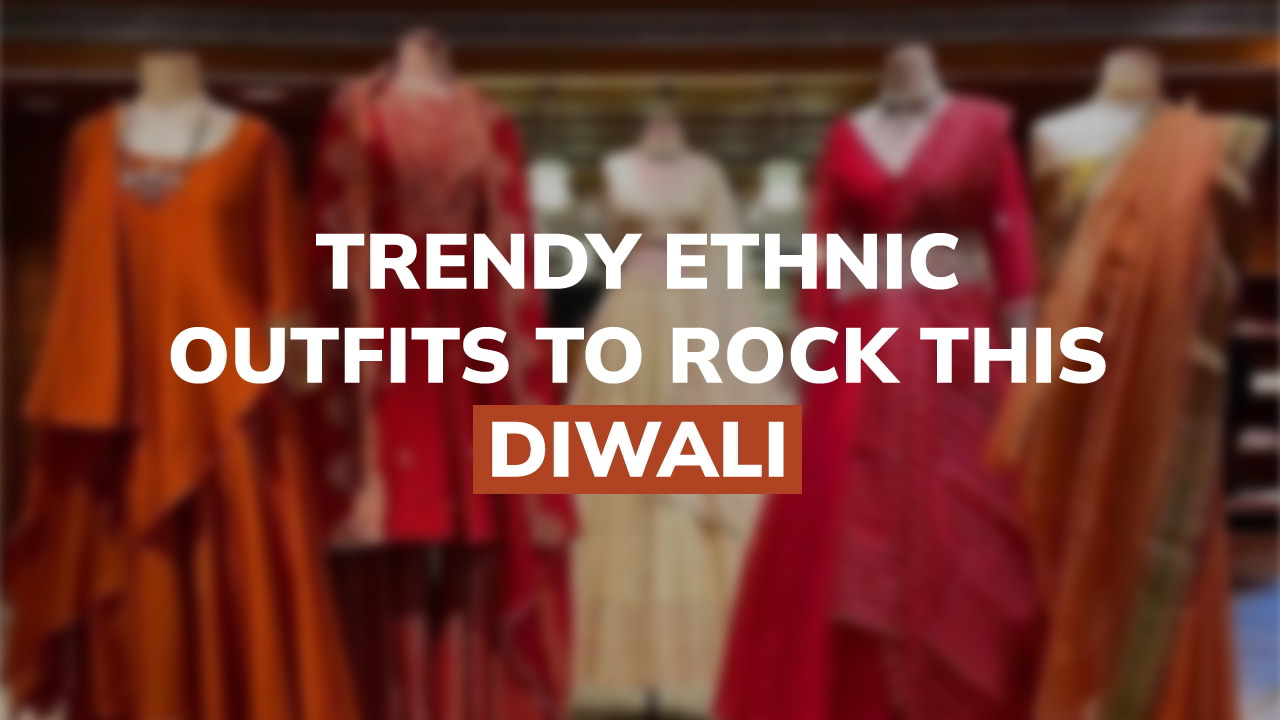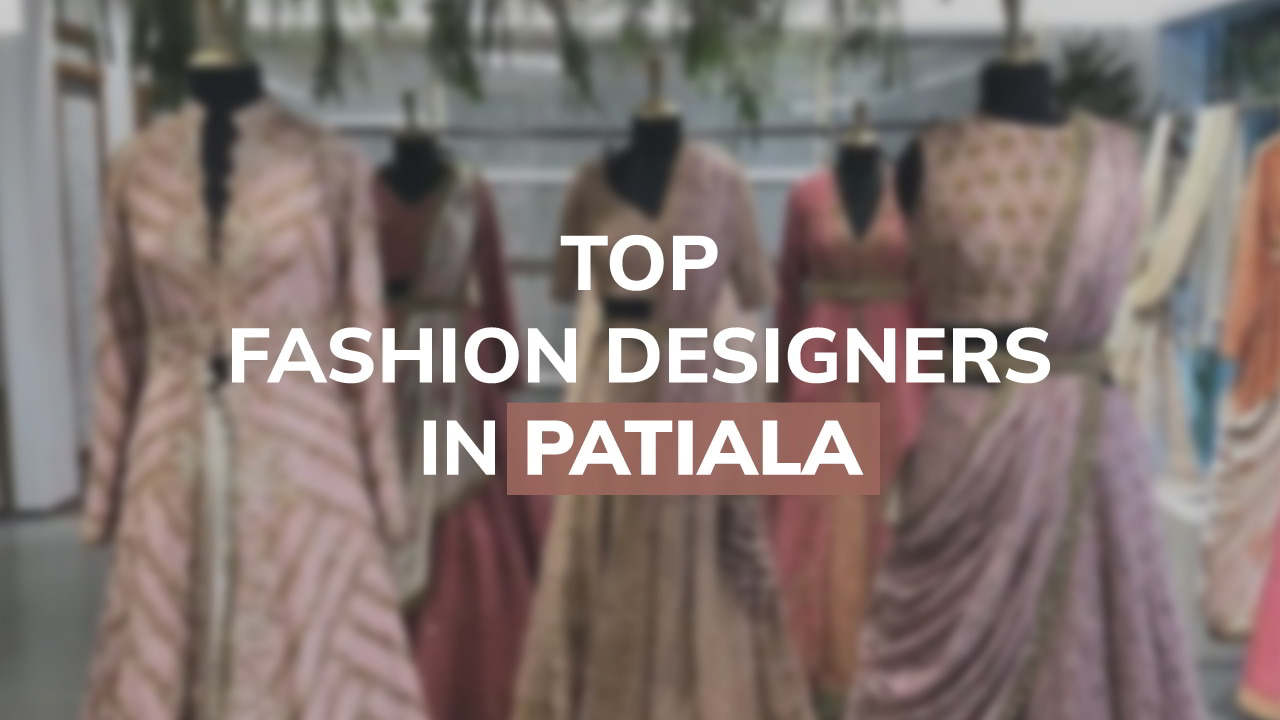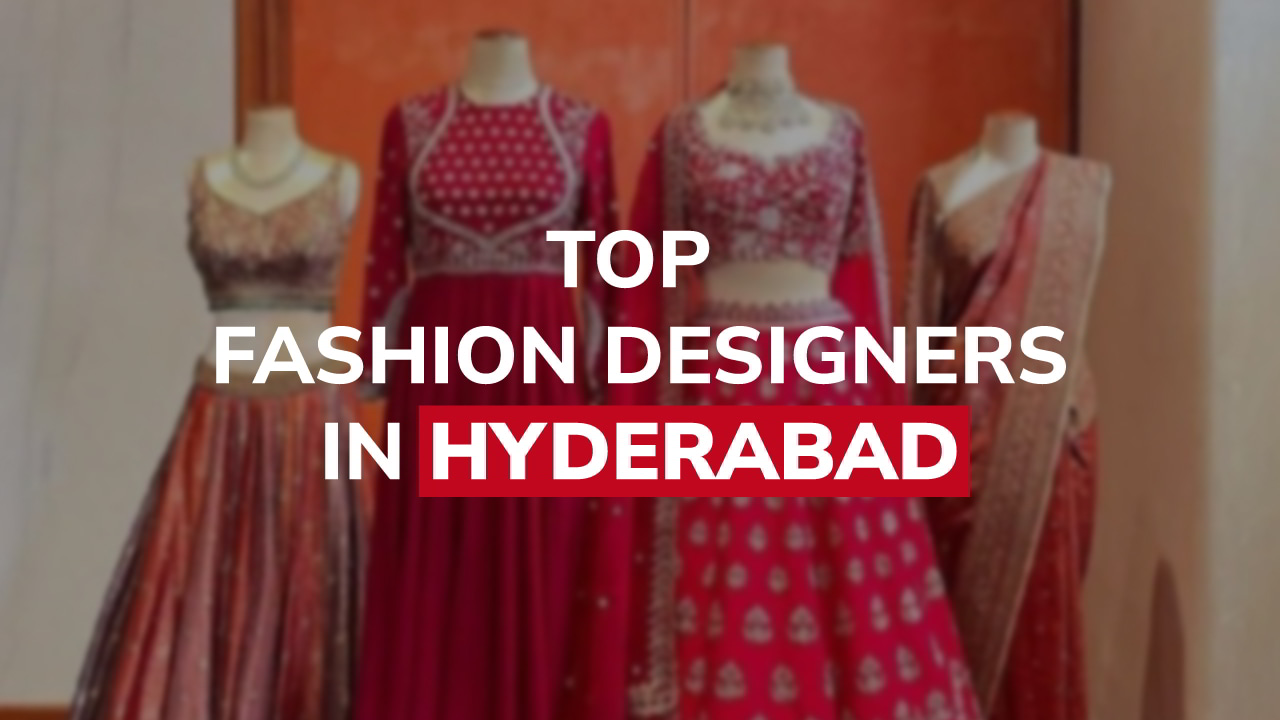Have you ever stood in front of your lehenga wondering, “How can I drape my dupatta to look stylish yet timeless?”
A simple twist or fold of the dupatta can transform your entire lehenga look—from ordinary to stunningly elegant. Dupattas aren’t just accessories to cover your shoulders; the dupatta is a key element that brings grace, drama, and personality to your outfit.
Whether you’re dressing up for a wedding, festival, or any special occasion, mastering different dupatta draping styles for lehenga is essential.
From classic shoulder drapes and iconic Sabyasachi styles to trendy cape drapes and belted looks, there’s a perfect way to wear your dupatta for every event and body type.
This blog includes over 21 versatile dupatta draping ideas, blending traditional charm with contemporary flair. You’ll also discover dupatta draping styles that flatter your unique shape so you can shine with confidence no matter your body type.
Ready to explore the lehenga chunni draping styles that complement your vibe and occasion?
Let's jump in!
Traditional Dupatta Draping Styles for Lehenga
Sabyasachi Dupatta Draping
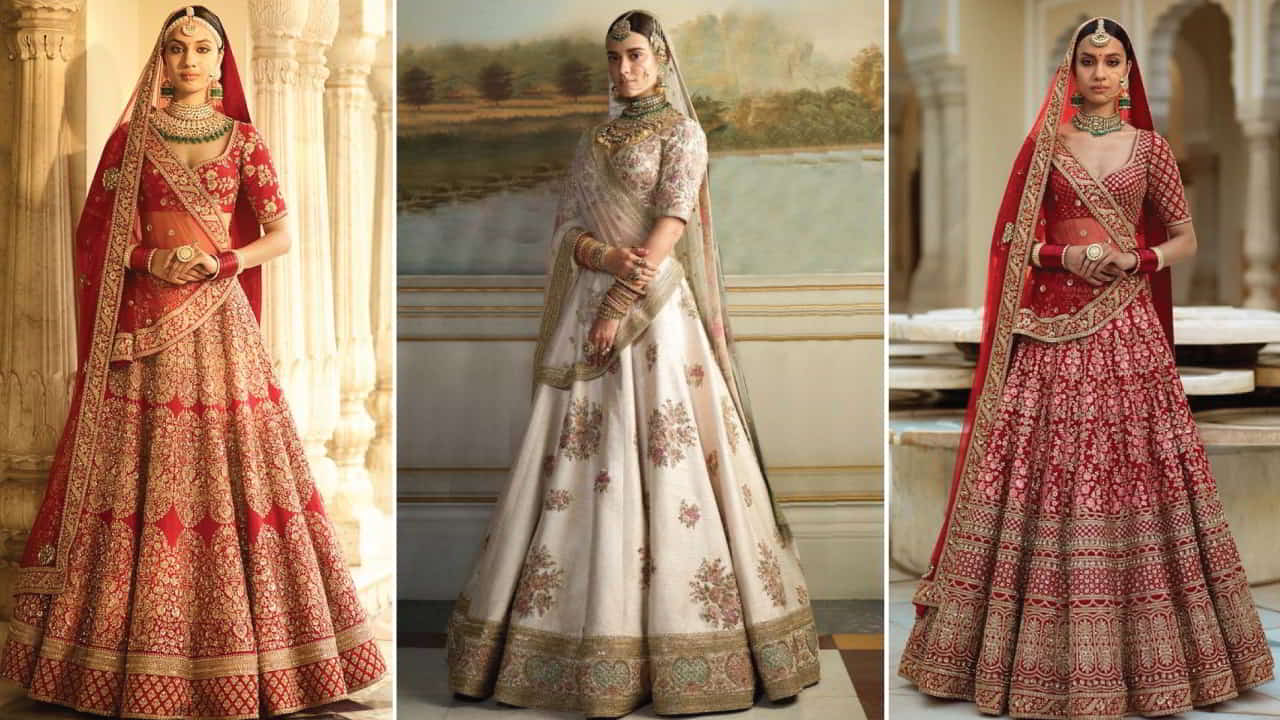
This iconic style, inspired by Sabyasachi Mukherjee, uses two dupattas—one pinned as a veil over the head, the other pleated across the front or over one shoulder, often secured at the waist. This style shows off both the embroidered dupatta and your lehenga stunningly. It’s great for brides who want a traditional yet stylish vibe and pairs perfectly with statement earrings and maang tikkas. Plus, it stays put for hours, so you don’t have to fuss with it.
Bonus Tips:
- Use lightweight fabrics to keep the dupatta comfortable all day.
- Keep your neck accessories simple; let earrings and hair jewelry take the spotlight.
One Side Dupatta Draping Style
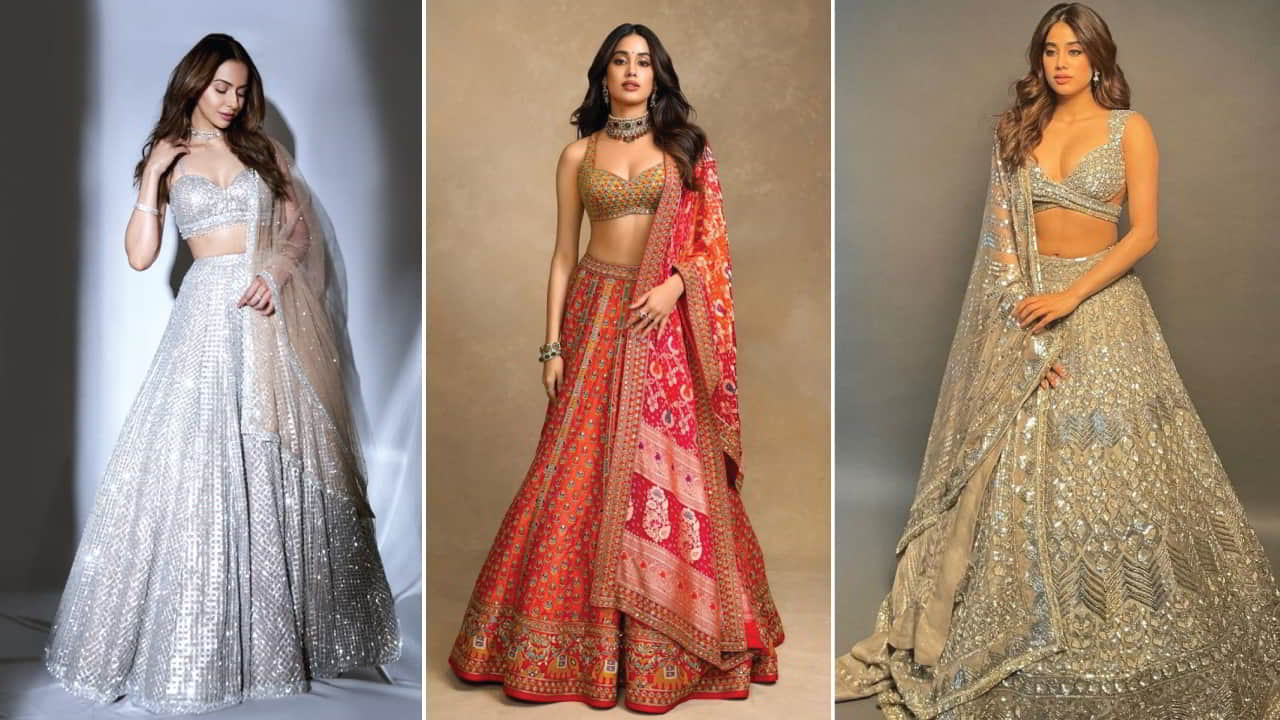
One of the easiest and most popular dupatta draping styles for lehenga is draping the dupatta on one shoulder and letting it fall freely on your side or back. This style lets your lehenga shine while keeping the traditional charm alive. It’s great for day events, sangeet nights, or weddings where you want to look elegant without much effort. It’s versatile with both heavy embroidered dupattas or light, plain ones. Also, since one arm is free, you can show off bangles or bracelets.
Bonus Tips:
- Pin the dupatta securely on the shoulder to keep it in place.
- Choose dupattas with attractive borders to add detail even when loose.
- This style suits every kind of fabric, from heavy silks to light nets.
Double Dupatta Draping Style

If you want to make a big impression, the double dupatta draping style is a great pick. You wear two dupattas—one draped over your head or shoulder like a veil, and the other pleated or loosely draped around your waist or other shoulder.
In this style mixing fabrics adds interest—for example, pair a heavy embroidered dupatta with a sheer plain one. Lightweight fabrics like net or chiffon for one dupatta make it easier to carry. This style suits brides and anyone wanting a rich, cultural look with a modern twist.
Bonus Tips:
- Combine one heavy dupatta with a light, sheer one to balance volume.
- Use hidden pins to secure both dupattas and avoid slipping.
- Pair with traditional jewelry to complete the festive vibe.
Bridal Lehenga Dupatta Draping Style

The bridal lehenga dupatta draping style is the most traditional way brides wear their dupatta. The dupatta covers the head like a soft veil and flows over the shoulders and chest. Usually, these dupattas are rich with embroidery or heavy borders to match the bridal lehenga. Fabrics like silk, velvet, or heavy georgette hold the shape well. Since it covers the head and shoulders, it’s perfect for close-up wedding rituals and photos. Pinning the dupatta carefully near the hairline and shoulders keeps it secure for the day.
Bonus Tips:
- Pick dupattas with delicate yet rich embroidery that highlights your bridal look.
- Pair with heavy traditional jewelry and elaborate hairstyles.
Pakistani Style Dupatta Draping

The Pakistani style dupatta draping is a graceful way to wear your dupatta for weddings or formal occasions. You place the dupatta over both shoulders like a shawl and toss one end over the opposite shoulder. Lightweight fabrics like chiffon or net work best here because they flow nicely and don’t add bulk. This drape highlights your neckline and earrings, especially if you pair it with a sleek bun. It’s a popular choice for Pakistani bridal fashion but also suits Indian weddings for a refined look.
Bonus Tips:
- Sheer fabrics keep the look light and elegant.
- Style your hair in a bun and wear long earrings for the best effect.
- Works well with both heavy and light dupattas.
Veil Style Drape
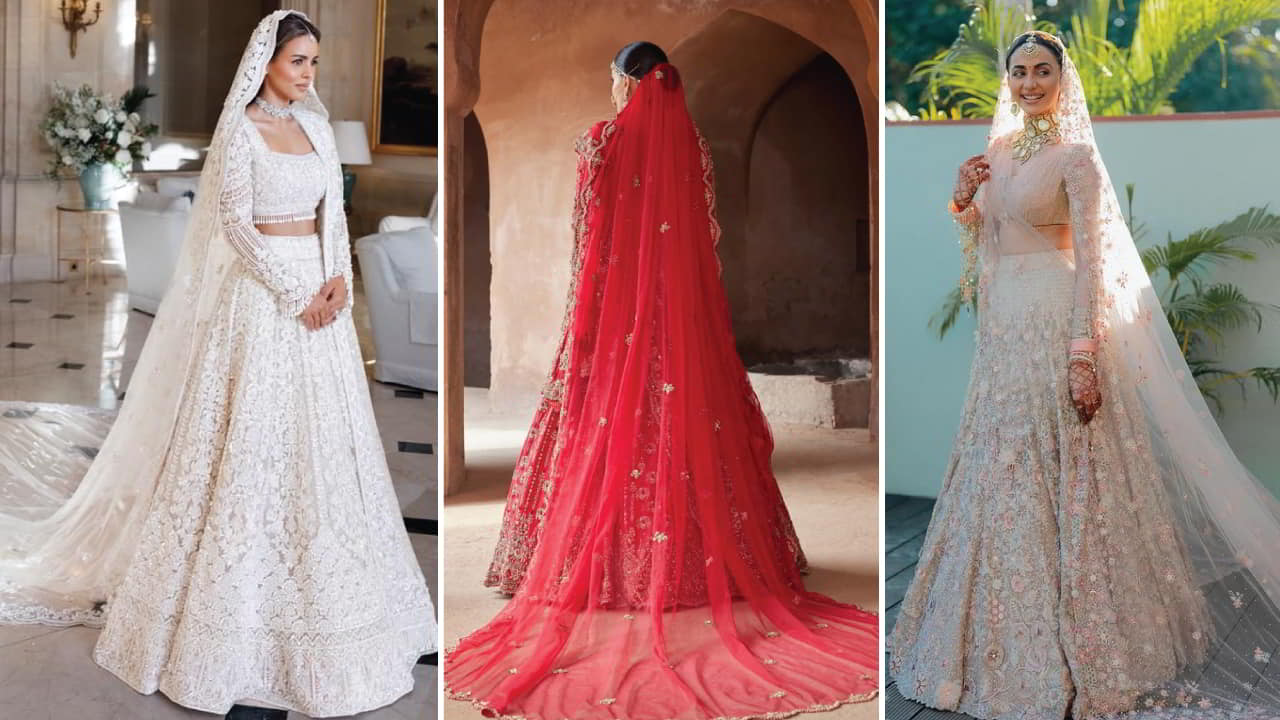
This veil style drape is a simple and shorter version of the bridal veil. You place the dupatta over your head and pin it near the top, letting it fall gently onto your shoulders. It’s modest and easy to carry, perfect for daytime ceremonies or smaller religious functions. Light colors and subtle embroidery work best for this style to keep the look soft and understated.
Bonus Tips:
- Keep your hair half-open or loosely tied to soften the look.
- Use light pastel shades and gentle embroidery for daytime events.
- This drape is comfortable and low-maintenance for long wear.
Rajasthani Style Dupatta Draping

This vibrant style from Rajasthan involves pleating the dupatta carefully and tucking it into the waistband at the front or side, then bringing it over the head or shoulder. It’s a colorful, lively drape that celebrates tradition with bold prints and mirror work.
Bonus Tips:
- Pair with chunky silver jewelry and jhumkas to complete the ethnic vibe.
- Use a lightweight cotton or silk dupatta for comfortable all-day wear.
- This drape works beautifully with traditional bandhani or leheriya prints.
Gujarati Style Dupatta Draping
(Front Pallu Style)
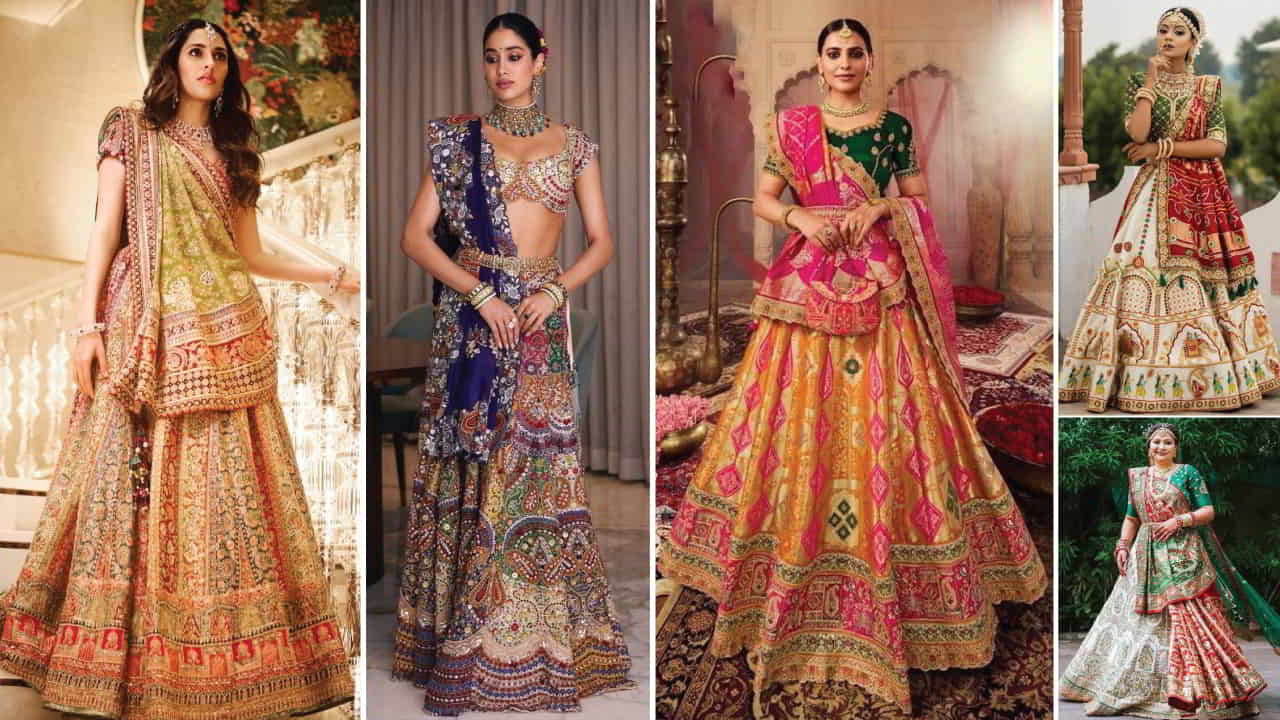
In this joyful style, the dupatta is tucked in at the back waist, brought over one shoulder, and the pallu is spread wide across the chest. It’s a favorite at Navratri and festive gatherings, adding volume and a festive spirit.
Bonus Tips:
- Let your dupatta’s border shine by choosing a contrasting color or rich zari work.
- This style pairs perfectly with flared ghagras and mirror work blouses.
Banarasi Dupatta Draping Style

The Banarasi dupatta, known for its rich silk and intricate zari work, is best draped simply—over one shoulder or styled like a saree pallu, wrapped around the torso to showcase its beauty. This minimalistic drape keeps the focus on the dupatta’s craftsmanship.
Bonus Tips:
- Keep accessories subtle; let the dupatta’s golden or silver threads do the talking.
- A plain blouse with heavy dupatta works better than pairing with too many embellishments.
Bengali Draping Style
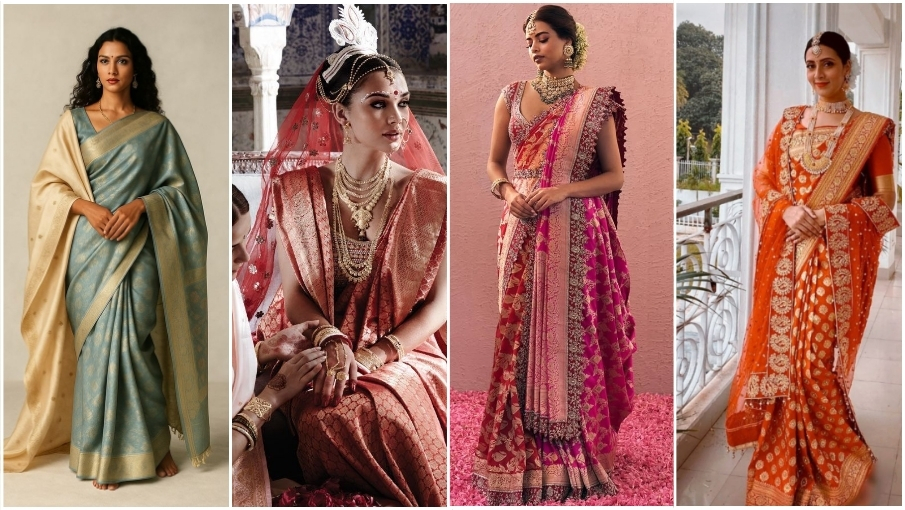
This style is similar to the Bengali saree look – drape the dupatta over both shoulders, pleat it neatly along the chest, and pin the ends at the back. It creates a balanced, symmetrical silhouette that is both graceful and modest.
Bonus Tips:
- Opt for rich silk or cotton dupattas with traditional borders.
- Pair with red or maroon lehengas for a classic Bengali look.
- Ideal for daytime ceremonies or religious functions.
Dhavani Draping Styles
(Half Saree Fusion)
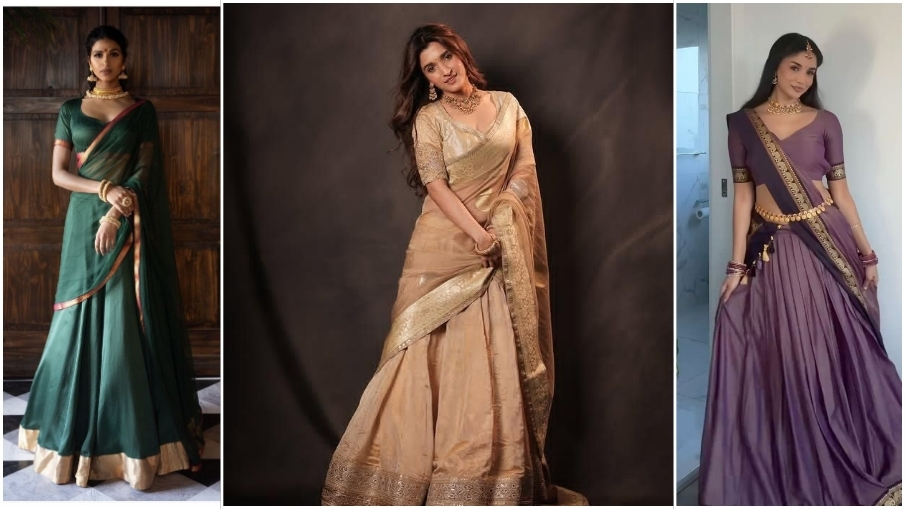
Inspired by South Indian half sarees, this fusion drape wraps the dupatta around the waist and over one shoulder, mimicking the saree pallu. It’s a trendy blend of cultures that adds uniqueness to your lehenga look.
Fashion Tips:
- Choose bright colors and contrast borders to highlight the fusion.
- Add temple jewelry for an authentic South Indian touch.
Side Pleated Dupatta Draping Style
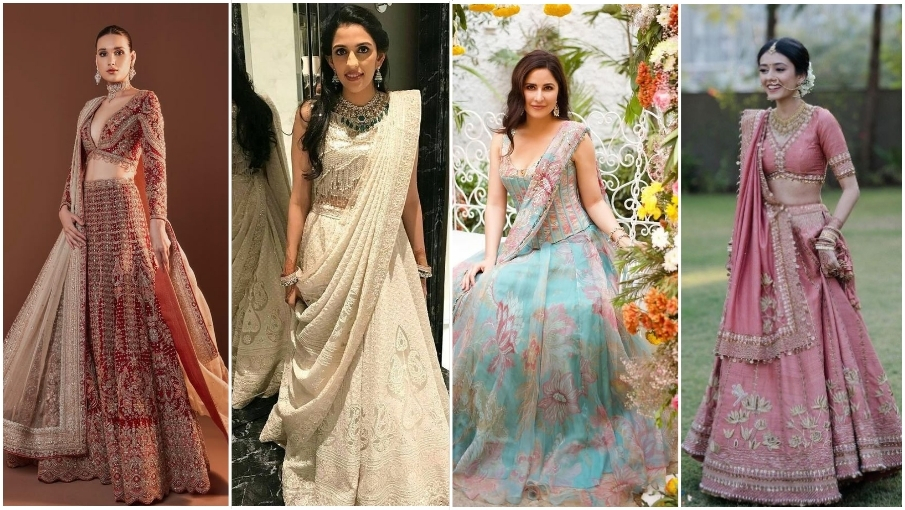
This neat and tidy style involves pleating the dupatta on one side and pinning it securely on the shoulder, letting the rest fall freely. It’s minimal yet stylish, perfect when you want your lehenga to shine without distractions.
Bonus Tips:
- Use a safety pin with a small brooch to add sparkle and keep it in place.
- Works well with heavier lehengas since the dupatta stays in place.
- Ideal for sangeet or reception events where you want to dance freely.
Modern Dupatta Draping Styles for Lehenga
Cape Style Dupatta Draping

The cape style dupatta draping turns your dupatta into a flowing cape that covers both shoulders without many pins. It adds drama, perfect for brides or guests who want a bold, modern style. This style pairs well with minimalistic or heavily embroidered lehengas for a statement look, especially at cocktail events.
Bonus Tips:
- Choose sheer fabrics for that flowing cape effect.
- Keep your hair sleek and simple to keep attention on the cape.
- Great for evening events where you want a modern twist on tradition.
Belted Dupatta Style
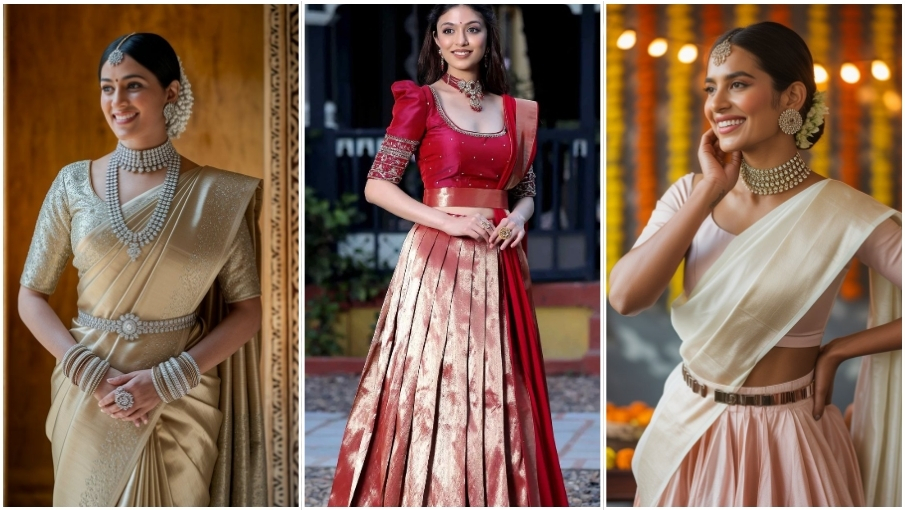
In the belted dupatta style, the dupatta is pinned and then cinched at your waist with a belt. This gives your outfit a structured and stylish look while highlighting your waistline. It’s perfect for hourglass or rectangular body shapes and great for events like sangeet or reception where you want to dance freely without worrying about your dupatta slipping.
Bonus Tips:
- Match your belt with your lehenga embroidery or choose a metallic belt for contrast.
- Avoid very heavy dupattas with this style for comfort.
High Neck Dupatta Drape

Wrap your dupatta around your neck and let both ends fall in the front or back. The high neck dupatta draping style pairs is pinned close to your neckline, creating a modest yet royal appearance.
Bonus Tips:
- Use delicate dupattas with subtle embroidery to keep the focus balanced.
- Pairs beautifully with statement earrings and a neat hairstyle.
Butterfly Dupatta Drape
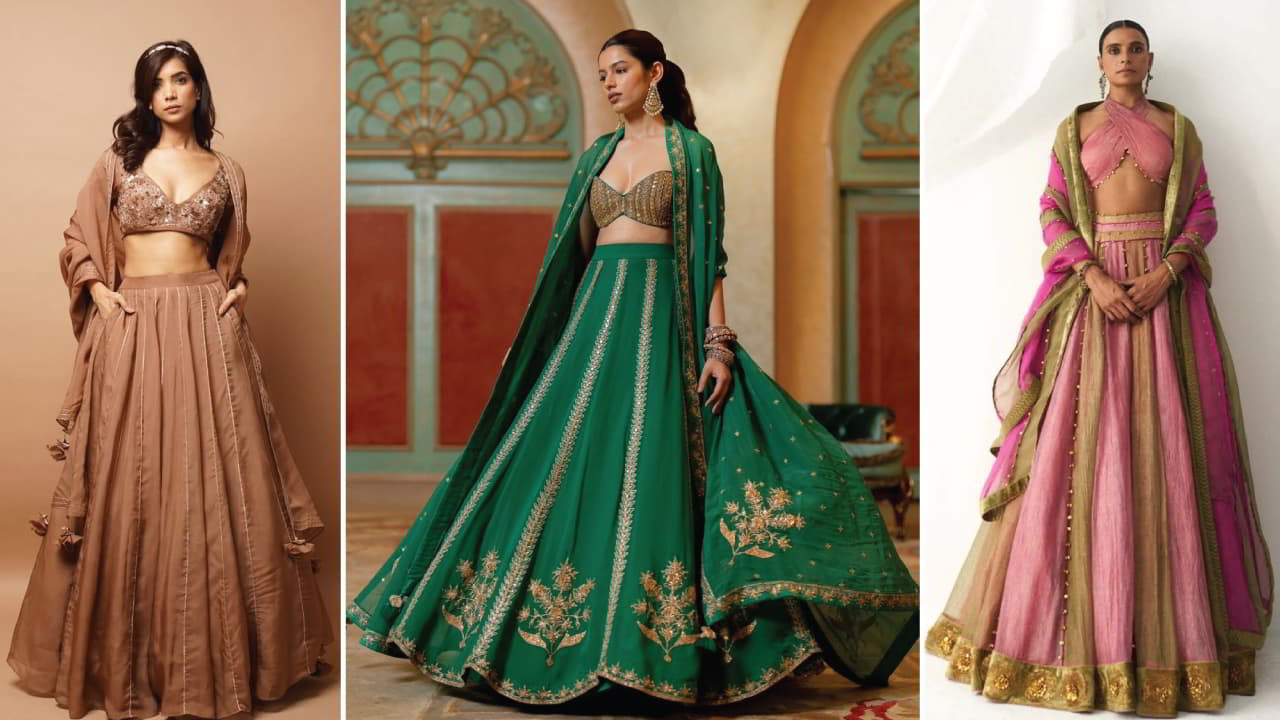
The butterfly dupatta draping style – Pin the center of your dupatta at the back and bring both ends over your shoulders, creating a butterfly wing look. It adds volume and a playful touch to your look without overwhelming your lehenga.
Bonus Tips:
- Let your hair down or style it loosely to match the butterfly vibe.
Wrist Type Dupatta Drape
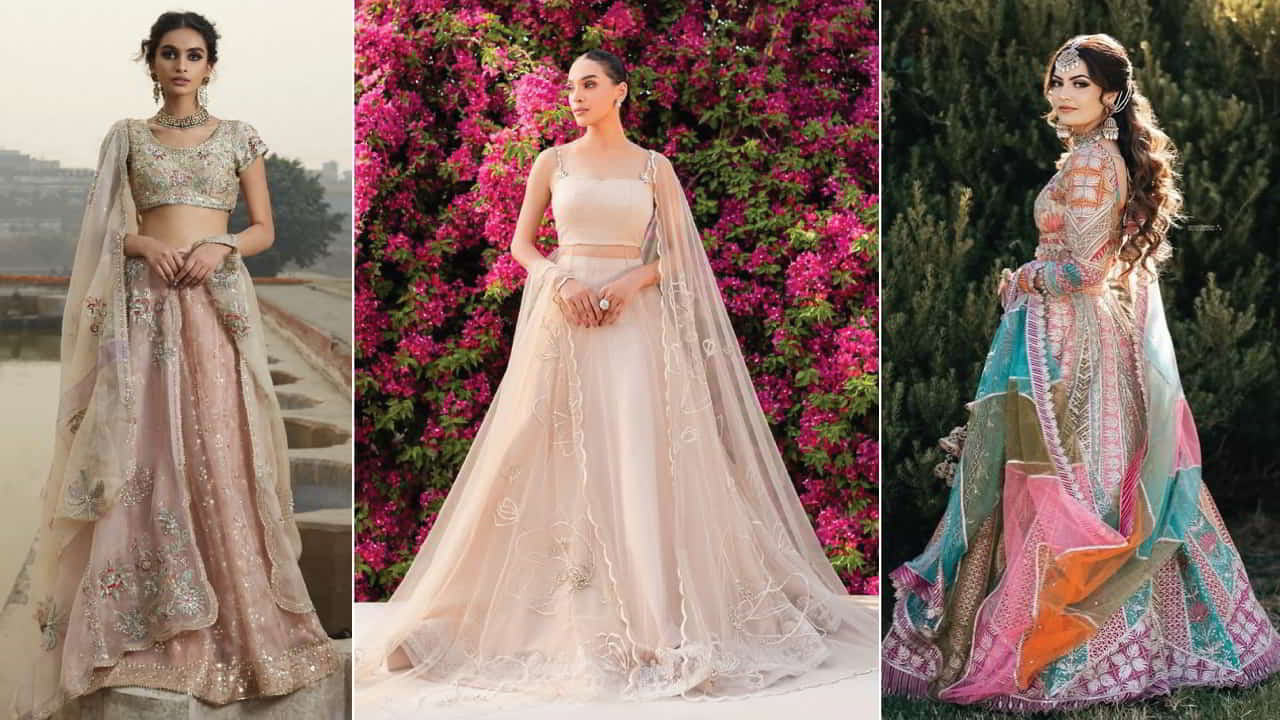
This unique wrist type dupatta draping style involves pinning the dupatta at your wrist, allowing it to flow from your shoulder down your arm. It creates an elegant movement and is great for dance-heavy events where you want your outfit to move with you.
Bonus Tips:
- Secure the pin well to avoid slipping during active moments.
- Pair with bold bangles or cuffs on the pinned wrist for extra glam.
Occasion Based Dupatta Draping Styles for Lehenga
Engagement Lehenga Dupatta Style
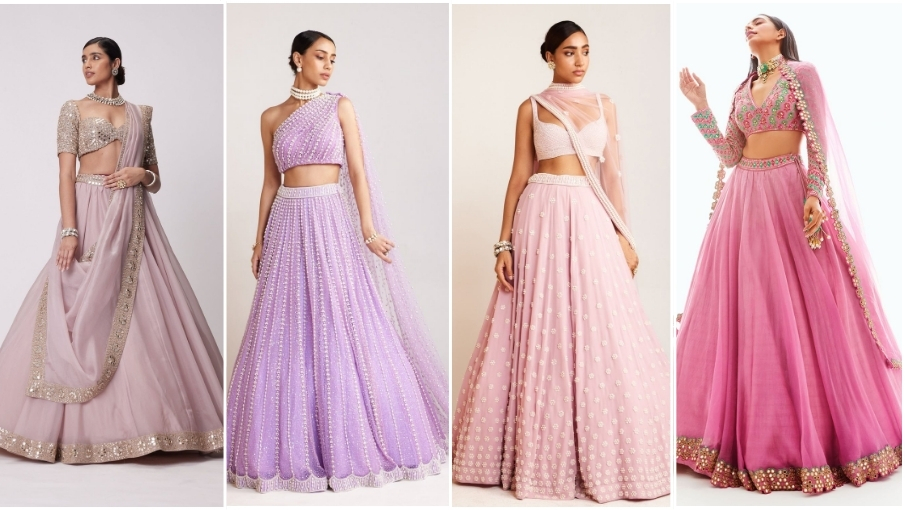
For an engagement lehenga dupatta style, consider a saree-style draping for your dupatta. This modern choice offers a fresh and elegant aesthetic, perfect for a modern engagement celebration.
Haldi Dupatta Draping

During the haldi ceremony, comfort and ease are key. The haldi dupatta draping involves either draping the dupatta over one shoulder or tying it securely around your waist. This style keeps the fabric away from your hands, so you can move freely and participate fully in the rituals. You can opt floral and printed dupatta to match colourful vibes
Sangeet Dupatta Drape Style

Sangeet and cocktail is all about dancing, so choose drapes like the butterfly or wrist type that keep your hands free and your style on point. These styles also add structure and a modern twist to your outfit, making you look chic and confident.
Bridal Dupatta Draping

For the ultimate bridal dupatta draping style, the double dupatta draping style is a timeless favorite. In this style, you use two dupattas—one heavier for the shoulders, and a lighter, sheer dupatta for the head. The heavier dupatta, often crafted from luxurious fabrics like silk, velvet, or banarasi, is draped across the shoulders or styled as a pallu.
Reception Dupatta Draping
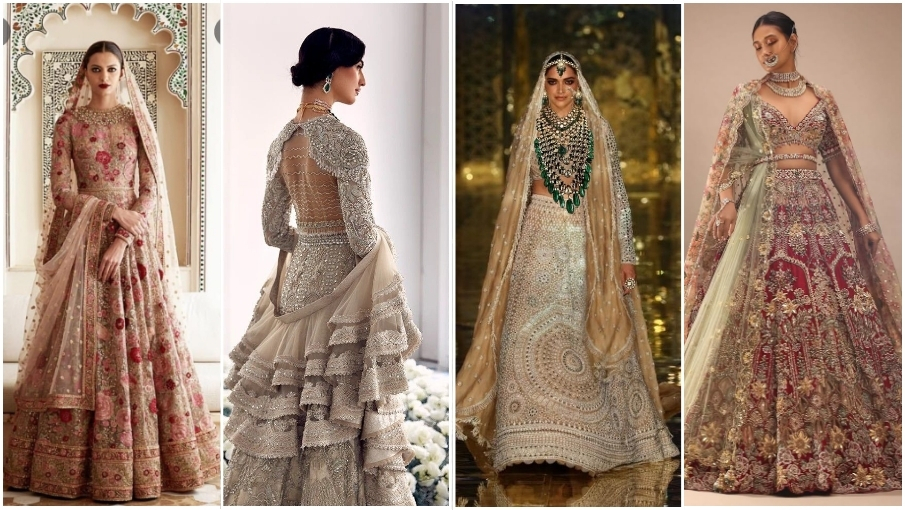
The reception dupatta draping style often involves modern cape styles dupattas that give a neat and polished look. Choose dupattas with subtle shimmer, sequins, or delicate embroidery to add evening sparkle without overwhelming your lehenga.
Dupatta Draping Styles for Your Body Type
- Hourglass: Balanced bust and hips with a defined waist.
- Pear: Hips are wider than shoulders.
- Apple: Fuller midsection with slimmer legs.
- Rectangle: Balanced bust, waist, and hips with little waist definition.
Dupatta Draping for Each Shape
- Hourglass: Opt for a belted one-shoulder drape to accentuate your waist.
- Pear: Choose a front U-shape drape with added shoulder volume to draw attention upward, balancing your proportions.
- Apple: Go for a diagonal drape with a long fall to elongate your figure. Avoid belted or pleated styles, which can add bulk to the midsection.
- Rectangle: A belted, front U-shape, or butterfly wing drape works best to create curves and add dimension to your look.
Now that you know these dupatta draping styles for lehenga, you can mix and match tradition and modern trends to create a look that’s all your own.
From the rich Banarasi dupatta draping styles for lehenga to the sleek engagement lehenga dupatta style, mastering these drapes will make you shine at every event.
For more inspiration on pairing these drapes with different outfits, check out our guide on different types of lehenga.

